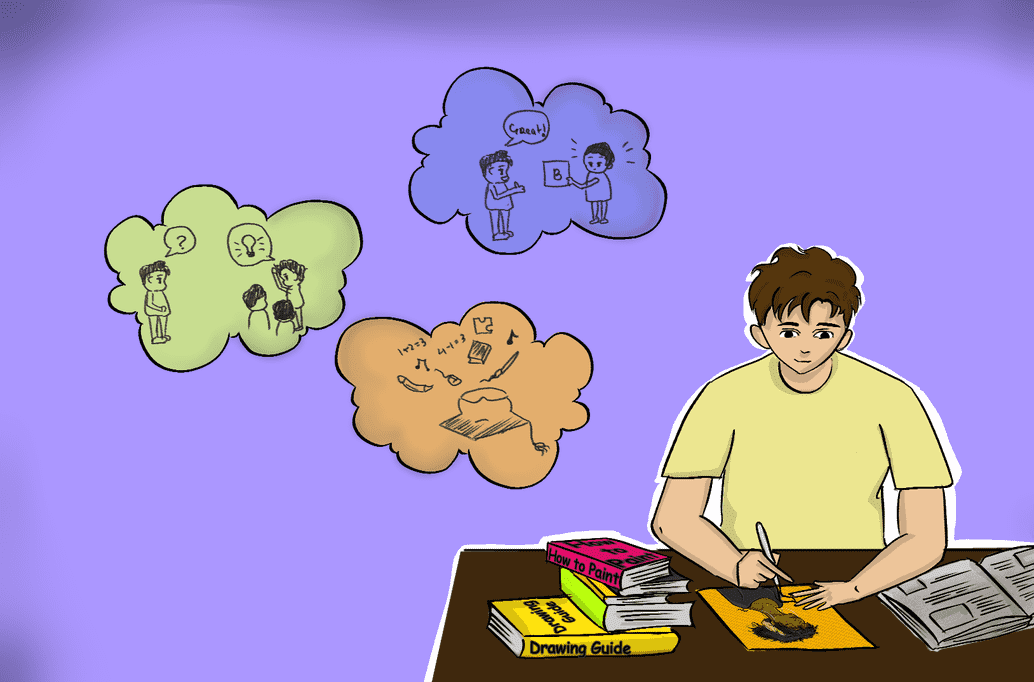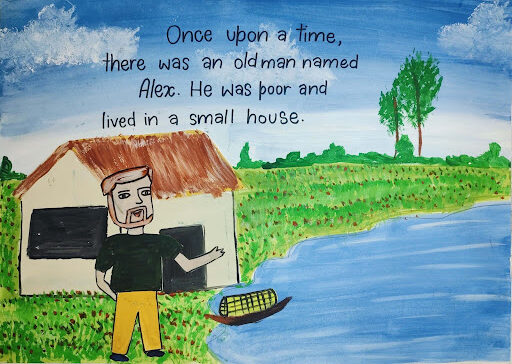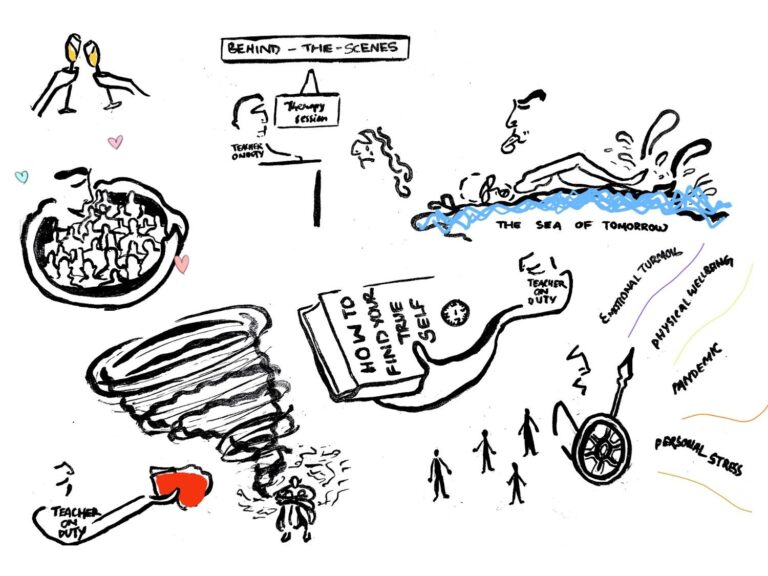Multilinguality as a key pillar of Education

Vaishali Sharma is a Master’s student in History at the University of Delhi, passionate about inclusive and holistic education. Her research interests include education, public policy, and international relations, with published works on curriculum.
Education transcends the acquisition of knowledge, becoming a journey that fosters cultural understanding, inclusivity, and personal growth. Multilingual education, with its emphasis on linguistic diversity, exemplifies this ideal. My perspective on this matter is deeply rooted in my academic and professional experiences, including my time as an intern at the education vertical of NITI Aayog. During my internship, I came across documents that underscored the significance of multilinguality in fostering inclusive and culturally responsive education. It is this profound understanding that informs my vision of an ideal school—a space where multilingual education thrives as the foundation of holistic learning.
India, a land of unparalleled linguistic diversity, stands as a testament to the importance of multilingual education. The 2011 Census records over 19,000 spoken mother tongues, with 22 officially recognized languages. This richness presents an opportunity to create an inclusive education system that respects and celebrates linguistic diversity. However, the current framework often marginalised minority languages, overshadowing their cultural and intellectual significance.
An ideal school must embrace multilinguality not as a challenge but as a resource. This perspective aligns with Professor R. K. Agnihotri’s concept of “multilinguality,” which rejects rigid language boundaries and instead views linguistic abilities as fluid and interconnected. In such a setting, students would naturally switch or mix languages to communicate effectively, fostering cognitive and social growth.
In practice, multilingual education involves teaching in two or more languages across various subjects. For instance, a science class in an ideal school might explain core concepts in the regional language while introducing relevant terminology in English. Similarly, history lessons could include discussions in students’ mother tongues, allowing them to connect deeply with cultural narratives before transitioning to national or global contexts. This approach goes beyond language instruction, incorporating regional languages into mainstream subjects to reflect the socio-cultural context of learners. Research highlights that children learn best in their mother tongue during their formative years, as it strengthens their foundational cognitive abilities and bridges the gap to learning additional languages.
An ideal school would implement this principle by following the guidelines set forth in policies like the National Education Policy (NEP) 2020. The NEP advocates teaching in the mother tongue or regional language until at least grade five, fostering a strong linguistic foundation. Moreover, it emphasizes flexibility, allowing states and schools to tailor their language offerings to regional and community needs. Such policies ensure that no language is imposed while promoting linguistic and cultural integration.
The success of a multilingual approach heavily depends on classroom dynamics and teacher preparedness. Teachers play a pivotal role in creating an inclusive environment where all languages are valued equally. This necessitates robust training programs to equip educators with the skills to navigate and utilize multilingual settings effectively.
In an ideal school, teachers would be trained not only in pedagogy but also in cultural competence, enabling them to understand and incorporate the linguistic backgrounds of their students. Activities like group discussions in multiple languages, bilingual storytelling, and collaborative translations could become integral parts of the curriculum. Such practices nurture mutual respect among students while enhancing their metalinguistic awareness—the ability to reflect on and manipulate language structures.
Implementing multilingual education in India faces several challenges, including resource limitations, insufficient teacher training, and resistance to change. Many schools lack access to quality textbooks and learning materials in regional languages. The situation is further exacerbated by societal biases favoring dominant languages like English and Hindi, often at the expense of marginalized languages.
An ideal school would address these challenges by leveraging technology and community involvement. For instance, digital platforms like e-learning apps can provide multilingual content tailored to regional needs, ensuring accessibility for students in remote areas. Simultaneously, community initiatives such as parent-teacher associations can play a pivotal role in integrating local culture and languages into the curriculum. Additionally, partnerships with local authors and artists can help create culturally relevant teaching materials, fostering a stronger connection between students and their learning environment. Digital tools can bridge resource gaps, providing access to diverse learning materials in multiple languages. Additionally, involving local communities in curriculum development ensures that the educational content reflects the lived experiences of students. For instance, including folk tales and regional literature in textbooks can make learning more relatable and engaging.
Numerous studies underline the cognitive benefits of multilinguality. Children exposed to multiple languages exhibit enhanced problem-solving skills, creativity, and adaptability. These abilities are crucial in today’s globalized world, where cross-cultural communication and critical thinking are indispensable.
An ideal school would cultivate these skills by promoting multilingual interactions beyond the classroom. For example, organizing multilingual theater productions could allow students to perform scenes in various languages, fostering both creativity and linguistic dexterity. Similarly, hosting cultural festivals where students present regional songs or folktales in different languages can create a vibrant, inclusive environment that celebrates linguistic diversity. Extracurricular activities like debates, theater, and cultural festivals in various languages provide students with practical platforms to apply their linguistic abilities. Such initiatives not only reinforce classroom learning but also prepare students for real-world challenges.
The success of multilingual education hinges on supportive policy frameworks. Documents like the National Curriculum Framework for School Education (NCFSE) 2023 align with the NEP 2020 in emphasizing multilinguality as a cornerstone of education. These frameworks advocate for the use of home languages in early education, alongside the gradual introduction of regional and global languages.
An ideal school would integrate these guidelines seamlessly, creating a flexible yet structured approach to language learning. For example, the curriculum could include a gradual transition from mother-tongue instruction to regional and national languages, ensuring that students retain their linguistic heritage while acquiring new skills.
A Forward-Looking Vision
An ideal school is not just an institution but a microcosm of society, reflecting its linguistic and cultural diversity. By embracing multilinguality, such a school becomes a beacon of inclusivity, equity, and innovation. It recognizes that language is not merely a medium of instruction but a powerful tool for cognitive, emotional, and social development.
My own journey as an Education and History student at Delhi University and my experiences with policy and curriculum development have shaped this vision. I believe that multilingual education is not just an academic ideal but a practical necessity in a diverse country like India. By fostering a multilingual environment, schools can create generations of learners who are not only academically competent but also culturally sensitive and globally aware.
In conclusion, multilingual education is the foundation of an ideal school—a space where linguistic diversity is celebrated, inclusivity is prioritized, and every child has the opportunity to thrive. By committing to this vision, educators, policymakers, and communities can collaboratively create an educational paradigm that not only honors linguistic diversity but also equips future generations to contribute meaningfully to a global society. Drawing on the insights from my academic and professional endeavors, I am optimistic about the transformative potential of such an educational paradigm. Let us work towards a future where every school embodies these principles, nurturing individuals who can navigate and enrich our multifaceted world.
References
- Ministry of Education. (2020). National Education Policy 2020. Government of India. Retrieved June 16, 2024, from https://www.education.gov.in/sites/upload_files/mhrd/files/NEP_Final_English_0.pdf
- Agnihotri, R. K. (2014). Multilinguality, education and harmony. International Journal of Multilingualism. Retrieved June 22, 2024, https://doi.org/10.1080/14790718.2014.921181
- Karthik, V. (n.d.). Language policy in Indian schools: A point of view. The Heritage School. Retrieved June 22, 2024, from https://www.heritagexperiential.org/language-policy-in-indian-schools-a-point-of-view/
- TargetStudy.com. (n.d.). Bilingual education in India. Retrieved June 22, 2024, from https://targetstudy.com/articles/bilingual-education-in-india.html
- Legal Indagation Firm. (2024, March 21). Embracing diversity: Exploring the dynamics of bilingual education in India. Retrieved June 26, 2024, from https://www.legalindagationfirm.co.in/education/title-embracing-diversity-exploring-the-dynamics-of-bilingual-education-in-india/
- Agarwal, A. (2024, May 20). Bilingual education in the classrooms of India. iDream Education. Retrieved June 27, 2024, from https://www.idreameducation.org/blog/bilingual-education-in-the-classrooms/
- Rama Kant Agnihotri (2014): Multilinguality, education and harmony, International Journal of Multilingualism, DOI: 10.1080/14790718.2014.921181
- National Council of Educational Research and Training. (2023). National Curriculum Framework for School Education (NCFSE) 2023. Government of India. https://ncfse.gov.in








This article offers a compelling vision of multilingual education, emphasizing its role in fostering inclusivity, cultural sensitivity, and cognitive development. Grounded in India’s linguistic diversity and supported by policy frameworks like NEP 2020, it presents practical strategies for implementation. Thoughtful and well-researched! Well done Vaishali!
Well written and thoughtful piece. You could delve deeper into how technology can bridge the gap in resource-limited areas, perhaps by suggesting specific tools or platforms that have shown promise in promoting multilingual education.
Well written vaishali!!
I agree with almost everything, however there’s one thing… Multilinguistic approach to teach any concept , has been in practice since a long time before . It may not be there in official guidelines… But on this very particular scope of teaching … Teachers do take this into account and practice to make a concept understandable to the class
The rich choices of words has made it authentic and genuine to read. I’m amazed with the clarity of thoughts on this specific matter Vaishali has… Kudos to you
I appreciate vaishali for focusing on multilingual education system.